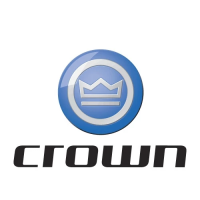LIFTING MECHANISM
Fork Inspection
342
M7.8-04.2-004
05 Rev. 11/08
Fatigue
A fatigue crack will normally start in the heel area of the
fork. Cracks can usually be detected in the early stages
by inspection of the heel area. Check for cracks that
transverse the fork in an area up to 130 mm (5.0 in)
either side of the outer heel radius. These cracks are a
sign that the area has weakened and the fork needs to
be replaced. Make a visual inspection for cracks each
work day. If a more accurate inspection is necessary,
use dye penetrants or magnaflux fork.
Bent or Twisted Forks
Overloading, glancing blows against solid objects or
picking up loads unevenly can bend or twist a fork,
making fork replacement necessary. The maximum al-
lowable difference in fork tip elevation from one fork to
another is 3% of the fork length.
The angle between the top of the fork (blade) to the
back surface of the vertical leg (shank) shall be less
than 93°. Any angle greater will require fork repair or
replacement. The fork manufacturer or service techni-
cian with the expertise of equal competence are the
only parties that should attempt to make such repairs.
Use a carpenter’s square to check the fork. Refer to
Figure 16862-01. Hold the square against the shank
staying above the radius of the heel as shown. Mea-
sure the distance closest to the radius of the heel of the
fork blade and square (2). Add 31.8 mm (1.25 in) to this
measurement and record. If the distance between the
end of the square and blade (3) is greater than this cal-
culation, replace blade (fork is deformed more than
93°).
Figure 16860-01
1 130 mm (5.0 in)
2 130 mm (5.0 in)
Figure 16861-01
1 93° Maximum
Figure 16862-01
1 609 mm (2.0 ft)
2“x”
3 “x” + 31.8 mm (1.25 in)
Crown 1988 PF7393-4 Rev. 11/08

